The world is plagued by further humanitarian crises that should neither be forgotten nor neglected. Though DONARE presently does not compile a complete crisis profile, here are snapshots of some of these humanitarian situations. The emergency situations include: the crisis in Madagascar due to ongoing food insecurity and vulnerability to climate-related disasters; the crisis in Malawi due to drought and flooding; and the ongoing crisis in the Western Sahara.
Madagascar Crisis
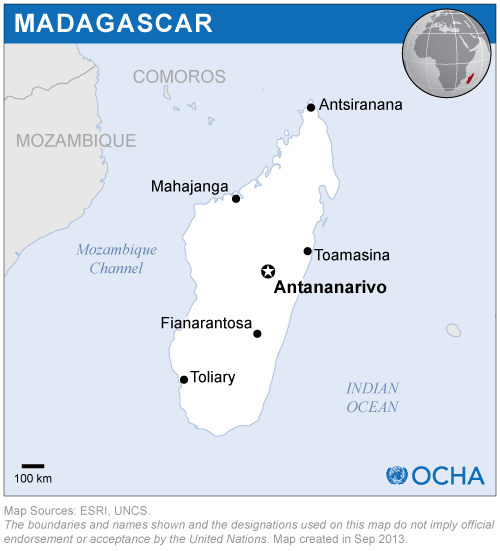
Madagascar is experiencing a worsening humanitarian crisis, particularly in the Grand Sud and Grand Sud-Est regions. These regions have endured a series of droughts, cyclones, and other disasters this year and last year. The lingering effects of the recent El Niño drought and cyclone season, coupled with a malaria outbreak and overburdened health systems, have left many communities unable to recover.
The southeastern African country is facing multiple humanitarian challenges, with more than 4.5 million people in need of urgent assistance. Madagascar remains highly vulnerable to frequent natural disasters, including tropical cyclones, droughts, and floods.
The most recent climate-related shocks occurred in the form of a prolonged October–December drought in 2024, exacerbated by the El Niño phenomenon, severe flooding from multiple cyclones, as well as migratory and red locust infestations, which destroyed key crops and threatened food security in the Grand Sud. In the Grand Sud-Est, an early-season drought was subsequently followed by a major malaria outbreak in April 2025.
The hunger crisis in Madagascar is intensifying. The number of people facing emergency food insecurity (IPC Phase 4) is expected to quadruple to 110,000 by January 2026, with the situation being particularly dire in the Grand Sud region. Nearly 1.64 million people in the country are expected to face high levels of acute food insecurity (IPC Phase 3 or worse).
Madagascar is already experiencing an alarming hunger situation, ranking 124th out of 127 countries on the 2024 Global Hunger Index, as reported by the Irish humanitarian organization Concern Worldwide and the German aid organization Welthungerhilfe. According to the Famine Early Warning Systems Network (FEWS NET), up to 1.99 million people will require humanitarian food assistance during the lean season peak, from January to March 2026.
Meanwhile, malnutrition has reached crisis levels across the Grand Sud region, with five districts surpassing the emergency threshold for severe acute malnutrition (SAM), placing thousands of children under five in life-threatening danger. Overall, SAM cases have surged by 87 percent, affecting nearly 160,000 children while moderate acute malnutrition (MAM) cases rose by 46 percent. SAM admissions have doubled, signaling an intensifying nutrition crisis.
Disease outbreaks further aggravate the humanitarian crisis. In the Grand Sud-Est region, communities already weakened by years of disasters and hardship are now dealing with surges in diarrhea and vector-borne diseases, such as malaria. Flooding from successive cyclones, damaged health facilities, and poor access to clean water have fueled the spread of these diseases.
Additionally, gender-based violence (GBV) remains a critical issue in Madagascar, with recent studies indicating a high prevalence, particularly in the southern regions. A combination of factors has contributed to this, including the successive droughts and cyclones, which have heightened inequalities and the risk of GBV.
Concurrently, severe funding cuts are crippling humanitarian operations, forcing aid agencies, particularly those in areas of acute need, to shut down, leaving thousands without life-saving aid. At least 15 international field offices of non-governmental organizations (NGOs) have closed, mostly in high-need districts, further shrinking humanitarian aid coverage.
With support from the United Nations and its partner organizations, the National Office for Risk and Disaster Management (BNGRC) has launched a National Humanitarian Response Plan. The plan calls for nearly US$185 million to address food insecurity, malnutrition, and disease outbreaks through April 2026.
However, as of November 2025, the plan has a $125 million funding gap. The Humanitarian Country Team (HCT), which includes the UN and its partner aid agencies, urgently requests $85 million to support the government-led plan and address the most pressing humanitarian needs of 1.5 million people.
As one of the countries most exposed to natural hazards, Madagascar ranks high in global assessments of vulnerability to climate change. In recent years, the country has experienced a series of disasters causing death, destruction, and displacement.
Since 2022, Madagascar has been hit by several devastating tropical cyclones, each leaving a trail of destruction and displacement. These cyclones have taken a heavy toll on Madagascar, claiming numerous lives, displacing thousands, and affecting millions.
Among the notable storms that have made landfall or significantly impacted the country are Tropical Cyclone Jude in March 2025, Tropical Cyclone Chido in December 2024, Tropical Cyclone Gamane in March 2024, Tropical Cyclone Freddy—which struck the region twice, in February and March of 2023—and Tropical Cyclone Gombe in March 2022.
Considered one of the poorest countries in the world, Madagascar is currently experiencing a severe political crisis. The crisis followed widespread, youth-led protests, military defections, and the president's exile after a military takeover in October 2025.
From late September to early October of 2025, large demonstrations took place in Antananarivo and several other regions, which were marked by violence and looting. On October 14, a military faction announced that it had seized control of the government and, on October 17, an interim president was sworn in.
Donations
There are currently few active appeals for the Madagascar crisis. You may also consider an un-earmarked donation to organizations or funds that are active in the country.
- UNICEF: Madagascar appeal
https://www.unicef.org/appeals/madagascar - World Food Programme (WFP): Madagascar
https://www.wfp.org/countries/madagascar - UN Crisis Relief: Central Emergency Response Fund
https://crisisrelief.un.org/t/cerf - Catholic Relief Services (CRS): Madagascar
https://www.crs.org/where-we-work/africa/madagascar - Caritas: Madagascar
https://www.caritas.org/where-caritas-work/africa/madagascar/
Malawi Crisis
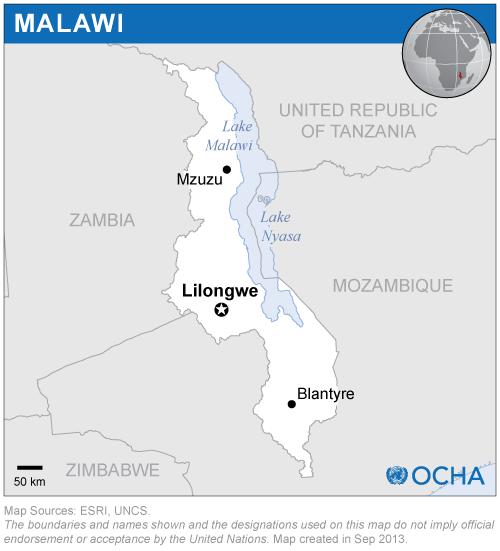
Malawi is facing the devastating effects of drought. On March 23, 2024, Malawi's President Lazarus Chakwera declared a state of emergency in 23 out of 28 districts affected by El Niño conditions. Malawi, like several other countries in southern Africa, is grappling with the effects of a severe drought exacerbated by the impact of the El Niño phenomenon.
The southern East African country is still reeling from the impact of tropical storms and cyclones in 2022 and 2023, and the compounding effect is pushing up to 40 percent of the country's population - about 9 million people - into hunger, threatening both lives and livelihoods.
By early 2024, nearly 2 million farming families and more than 40 percent of the country's agricultural land were affected by extreme weather, with rains and prolonged dry spells, as well as flooding, severely damaging crops and food production.
In July 2024, the UN launched a flash appeal seeking more than US$136 million to provide life-saving assistance to 3.8 million people who have been impacted by the country’s devastating drought.
Humanitarian agencies in Malawi, such as the United Nations World Food Programme (WFP), are scaling up emergency assistance, including food and nutrition, as well as water, sanitation and hygiene (WASH) support. They are also providing health, protection, education and livelihoods support, despite limited funding.
According to the latest Integrated Food Security Phase Classification (IPC) analysis, between October 2024 and March 2025, which coincides with the lean season in Malawi, nearly 5.7 million people are estimated to be in crisis or worse levels of hunger, with 416,000 people expected to be in emergency levels of acute food insecurity. More than 62,000 children aged 6 to 59 months are at risk of severe acute malnutrition (SAM), also known as wasting. An estimated 573,800 children under the age of five and 228,000 pregnant and lactating women are at risk of malnutrition.
Neighboring Zimbabwe and Zambia have also been hit hard by the drought. Both countries have declared a state of emergency. According to the Famine Early Warning Systems Network (FEWS NET), a record dry spell of more than 30 days has affected much of the southern African region, including Malawi, Mozambique, Zambia and Zimbabwe. The affected areas received the lowest rainfall for the late January/February period in at least 40 years. Malawi is one of six countries in Southern Africa that have declared a state of disaster due to drought.
More than 61 million people in the Southern Africa region have been affected by drought and other extreme weather conditions caused by El Niño and exacerbated by the climate crisis. In May, an extraordinary summit of the Southern African Development Community (SADC) launched a regional humanitarian appeal that seeks US$5.5 billion to provide urgent humanitarian assistance to more than 56.6 million people, including 3.5 million children in need of nutritional support.
In 2022/2023, Malawi experienced the deadliest cholera outbreak in the country's history. The Malawi Ministry of Health declared the cholera outbreak on March 3, 2022, following the spread of several confirmed cases. The number of cholera cases and deaths in the country increased exponentially, with the peak of the outbreak affecting all 29 districts of Malawi in January 2023.
By June 2023, health officials reported that the cholera outbreak was finally slowing, thanks to the continued work of the national government and the international community. The United Nations and its humanitarian partners provided more than one million people with access to clean water, adequate sanitation, and hygiene supplies. As of January 2024, cholera cases in Malawi are sporadic, averaging only 10 cases per week.
The country also experiences a variety of natural disasters, including cyclones, cyclical droughts, earthquakes, floods, and severe storms. In March 2023, the longest-lasting tropical cyclones on record hit Malawi, causing extensive damage, killing hundreds of people, leaving more than 650,000 homeless, and affecting approximately 2.3 million people.
Donations
There are currently few active appeals for the Malawi crisis. You may also consider an un-earmarked donation to organizations or funds that are active in the country.
- World Food Programme (WFP): Malawi
https://www.wfp.org/countries/malawi - UNICEF: Malawi
https://www.unicef.org/malawi/ - UN Crisis Relief: Central Emergency Response Fund
https://crisisrelief.un.org/t/cerf
Western Sahara Crisis
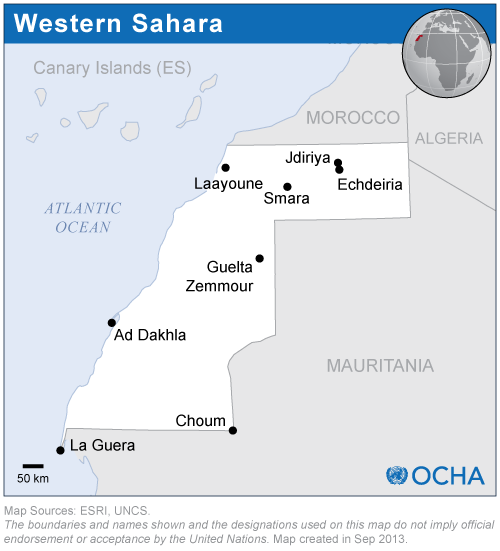
The Western Sahara crisis is a long-standing conflict over the sovereignty of the Western Sahara, a territory in North Africa that is bordered by Morocco, Mauritania, and Algeria. The Sahrawi refugee crisis refers to the displacement of a large number of people from the Western Sahara, who fled their homes during the conflict. The crisis began in 1975, when Spain withdrew from the Western Sahara, and both Morocco and Mauritania claimed sovereignty over the region. The dispute led to a war between the two countries and the Western Saharan independence movement, known as the Polisario Front.
As a result of the conflict, many Sahrawi people were forced to flee their homes and became refugees in neighboring countries, particularly Algeria, which provided them with sanctuary. The refugees established camps in the Tindouf province of Algeria, where they continue to live to this day. The camps are home to an estimated 173,000 refugees, many of whom were born in the camps and have never known life outside of them.
The five Sahrawi refugee camps (Awserd, Boujdour, Dakhla, Laayoune, and Smara) in Algeria - on the border between Mauritania, Morocco, and Western Sahara - are located in a remote and inhospitable desert region, which makes it difficult to provide for the basic needs of the refugees. The refugees in the Sahrawi camps face a number of challenges, including limited access to food, water, and medical care. In addition, the long-standing conflict over the Western Sahara has made it difficult to find a lasting solution to the refugee crisis.
There is currently insufficient information on the humanitarian situation in the refugee camps in Tindouf, as well as on the exact number of people affected and in need. The refugees remain extremely vulnerable and dependent on international assistance for survival, with limited opportunities for self-reliance.
In November 2023, the UN launched the Sahrawi Refugee Response Plan, covering the needs of Sahrawi refugees in 2024 and 2025. The Plan calls for $214 million to ensure food stability, a reliable water supply as well as to address the nutritional requirements of people living in camps in Tindouf. Funding will also be used to enhance educational access, offer protection services and to improve and promote the health of the men, women and children living there.
Donations
- World Food Programme (WFP): Algeria (The World Food Programme has been supporting the most food insecure refugees since 1986.)
https://www.wfp.org/countries/algeria - Danish Refugee Council (DRC): Saharawi Response / Algeria
https://pro.drc.ngo/where-we-work/west-north-africa/saharawi/
Southern Africa Hunger Crisis (Archive)
Southern Africa is facing its worst hunger crisis in decades. The United Nations warns that a widespread drought in the region, triggered by the El Niño weather pattern, could turn into a full-scale humanitarian disaster without international assistance. More than 68 million people in the region have been affected by drought and other extreme weather conditions caused by El Niño and exacerbated by the climate crisis.
To date, six countries in the region have declared national drought emergencies due to the hunger crisis: Botswana, Lesotho, Malawi, Namibia, Zambia and Zimbabwe. Angola and Mozambique are also severely affected, with an estimated 1.8 million people in Angola and 3.3 million people in Mozambique considered food insecure.
The 2023/2024 El Niño event caused widespread drought conditions across Southern Africa, characterized by late onset of rains, prolonged mid-season dry spells and extremely high temperatures. These extreme weather shocks led to the displacement of thousands of people, disease outbreaks, food shortages, water scarcity, and significant impacts on agriculture.

A total of 27 million people, mainly in Malawi, Mozambique, Zambia, Zimbabwe and Madagascar, are projected to face severe acute food insecurity as of October 2024. According to the UN World Food Programme (WFP), the historic drought has devastated the lives of tens of millions of people across the region, with some 21 million children suffering from malnutrition. Zambia, Zimbabwe, Malawi and Mozambique are the worst hit.
Approximately 5.8 million people - or nearly 30 percent of Zambia's population - will face crisis levels of food insecurity (IPC 3) or worse between October 2024 and March 2025, compared to more than 2 million in the same period last year.
In Malawi, the situation is expected to worsen between October 2024 and March 2025, coinciding with the country's lean season. Nearly 5.7 million people are estimated to be in crisis or worse levels of hunger during this period, with 416,000 people expected to be in emergency levels of acute food insecurity.
Zimbabwe is facing the humanitarian impact of a historic drought that has left 7.6 million people at risk of acute hunger, with more than half of the harvest destroyed. According to the latest IPC estimates, 5.9 million people in rural areas and 1.7 million people in urban areas are at risk of acute hunger during the lean season and until the next harvest in April 2025.
In Mozambique, about 3.3 million people will face severe acute food insecurity (IPC phase 3 or higher) from October 2024 to March 2025. Of these, 773,000 are expected to be in emergency levels (IPC Phase 4). The country is already suffering from the ongoing complex emergency in the northern province of Cabo Delgado, where non-state armed groups are attacking civilians.
Drought-affected populations, particularly those in the emergency phase, will require urgent humanitarian assistance to reduce food gaps, protect and restore livelihoods, and prevent acute malnutrition. FEWS NET estimates that more than 14 million people will be in need of urgent humanitarian assistance during the lean season from October to December 2024.
The 2024 El Niño event is the worst to hit Southern Africa in the last 40 years, with severe consequences for communities already struggling due to failed harvests and other socio-economic factors.
The severe weather shocks have led to the displacement of thousands of people, disease outbreaks, food and water shortages, and significant impacts on agriculture. More than one million people have been internally displaced by disasters and climate change, mainly in Malawi, Mozambique and Zimbabwe.
The number of forcibly displaced, returnees and stateless people in the Southern Africa region is expected to continue to rise in 2024, with the majority of people uprooted by the effects of climate crises such as drought and floods.
Massive water shortages mean that millions of people are at increasing risk of waterborne diseases. The drought has occurred in an environment already vulnerable to several epidemics and medical emergencies, including cholera and measles. The emerging risk of mpox could potentially divert resources and response efforts away from the drought response in some affected countries.
The risk of cholera outbreaks remains as the region grapples with one of the worst cholera outbreaks in decades, with Malawi, Mozambique, Zambia, and Zimbabwe among the eight worst affected countries in the world.
The combined effects of El Niño, cholera outbreaks, conflict, and climate change have strained and disrupted health systems across Southern Africa, significantly reducing access to essential and life-saving sexual and reproductive health services.
Overall, food insecurity and malnutrition are expected to worsen given macroeconomic challenges, rising food prices, and continued disease outbreaks coinciding with the lean season. Further abnormally hot conditions are forecast for central southern Africa.
Countries likely to experience increased rainfall are at increased risk of flooding and will have significant humanitarian impacts. However, favorable rainfall may provide respite for livestock and wildlife and support crop production.
Southern Africa remains one of the most vulnerable regions in the world to climate change, largely due to its high dependence on rain-fed agriculture, natural resources and climate-sensitive livelihoods.
The United Nations World Food Programme (WFP) is coordinating its response with the Southern African Development Community (SADC), national governments and a wide range of partners to reach the most affected communities with the limited resources available and help avert loss of life and livelihoods.
WFP needs US$369 million to provide food and cash assistance to more than 6.5 million people across the region through March 2025.
Donations
- World Food Programme: Southern Africa Drought
https://www.wfp.org/emergencies/southern-africa-drought - International Federation of Red Cross and Red Crescent Societies (IFRC): Africa Hunger Crisis
https://donation.ifrc.org/?campaign=7e7adb56-7b45-ed11-a2d8-005056010028- Lesotho Drought
https://donate.redcrossredcrescent.org/ifrc/lesotho-drought/~my-donation - Mozambique Drought
https://donation.ifrc.org/?campaign=efdfe97b-4917-ef11-a2ea-0050560100d7 - Zambia Drought
https://donation.ifrc.org/?campaign=da14a4a6-4917-ef11-a2ea-0050560100d7 - Namibia Drought
https://donate.redcrossredcrescent.org/ifrc/namibia-drought/~my-donation
- Lesotho Drought
- Oxfam GB: Southern Africa Appeal
https://www.oxfam.org.uk/oxfam-in-action/current-emergencies/southern-africa/ - World Vision International: Southern Africa Hunger Emergency Response
https://www.wvi.org/emergencies/southern-africa-hunger-emergency-response
Libya Crisis (Archive)
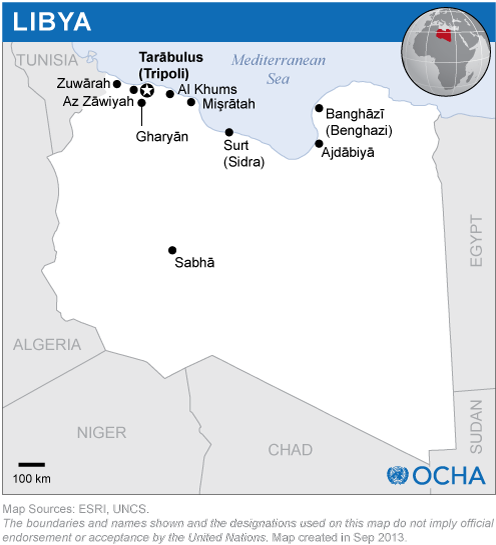
On September 10-11, 2023, Storm Daniel passed over Libya, causing heavy rains and flooding in several districts. The impact of Storm Daniel was exacerbated by the collapse of two dams, which caused the deaths of thousands of people in the city of Derna. Homes, livelihoods and entire communities were washed away. As of October 4, the storm has claimed more than 4,300 lives, while more than 9,500 people are still missing in Derna. An estimated 250,000 people are in need of humanitarian assistance as a result of the storm.
At least 45,000 people have been displaced in northeastern Libya due to flooding caused by the storm and dam breaches. The flooding in Libya has claimed many lives, destroyed infrastructure, and created a crisis for displaced people who are now coping with the aftermath. 101 health workers in Libya lost their lives during Storm Daniel or in its immediate aftermath.
In the hardest-hit northeastern city of Derna, at least 25,000 people remain displaced. Widespread damage and destruction of homes have forced thousands to seek refuge in makeshift shelters, schools, and overcrowded homes with family and friends, many of whom were themselves affected by the storm.
In addition to the hardships caused by the September 2023 floods, Libya has experienced widespread armed conflict, civil unrest, and political instability since 2011. Although humanitarian conditions have improved since the October 2020 ceasefire agreement, people living in Libya - local residents, migrants, and refugees - continue to face the negative effects of political and economic instability and insecurity.
Libya is effectively controlled by two rival administrations: the internationally recognized government in Tripoli and authorities co-located with the parliament in the east of the country. The two rival governments in Libya mean that decision-making is often paralyzed. The Libyan population continues to suffer the effects of political and economic instability and ongoing violence, including fierce fighting in Tripoli in the summer of 2022. An estimated 329,000 people in Libya were in need of humanitarian assistance in early 2023, prior to Storm Daniel.
As of October 2023, more than 125,000 people across the country were displaced due to conflict, while more than 705,000 previously displaced Libyans have returned to their areas of origin. Meanwhile, some internally displaced people (IDPs) are unable to return to their areas of origin due to damaged shelters and infrastructure, lack of basic services, or security concerns. IDPs and returnees in Libya require ongoing humanitarian assistance, including health care, protection, and shelter support.
In addition, Libya remains a major transit country for refugees and migrants from sub-Saharan Africa. As of October 2023, some 50,000 refugees and asylum seekers were registered in the country. As of March 2023, Libya was home to more than 705,000 migrants. The United Nations reports that migrants in Libya face high levels of protection risks, including arbitrary detention, forced labor, violence, restricted movement, and gender-based violence, as well as limited access to housing and basic services.
Humanitarian organizations in Libya continue to face bureaucratic and administrative obstacles that impede their work. These include problems renewing visas for international staff and difficulties accessing Libya's financial system, which prevent them from making international financial transfers, opening local bank accounts, and withdrawing cash. These obstacles have delayed the delivery of critical assistance to vulnerable populations throughout the country.
Donations
- United Nations Crisis Relief: Libya Floods Response
https://crisisrelief.un.org/libya-floods-response - UN World Food Programme (WFP): Libya Floods Emergency
https://donate.wfp.org/1244/donation/single/?campaign=3326&utm_campaign=230912_Libya_Emergency - United Nations Refugee Agency (UNHCR): Libya Floods Emergency
https://donate.unhcr.org/int/en/libya-floods - International Federation of Red Cross and Red Crescent (IFRC): Libya Storm Daniel
https://donation.ifrc.org/?campaign=d2444dee-0652-ee11-a2e7-005056010027 - International Rescue Committee: Flood in Libya
https://help.rescue.org/donate/urgent-crisis-flood-libya - UNICEF: Urgent appeal for Libya Floods 2023
https://help.unicef.org/libya-floods-2023 - International Medical Corps: Libya Floods
https://give.internationalmedicalcorps.org/page/135068/donate/1 - Islamic Relief Worldwide: Libya Floods Appeal
https://islamic-relief.org/appeals/libya-floods-appeal/
Turkey-Syria Earthquake Emergency (Archive)
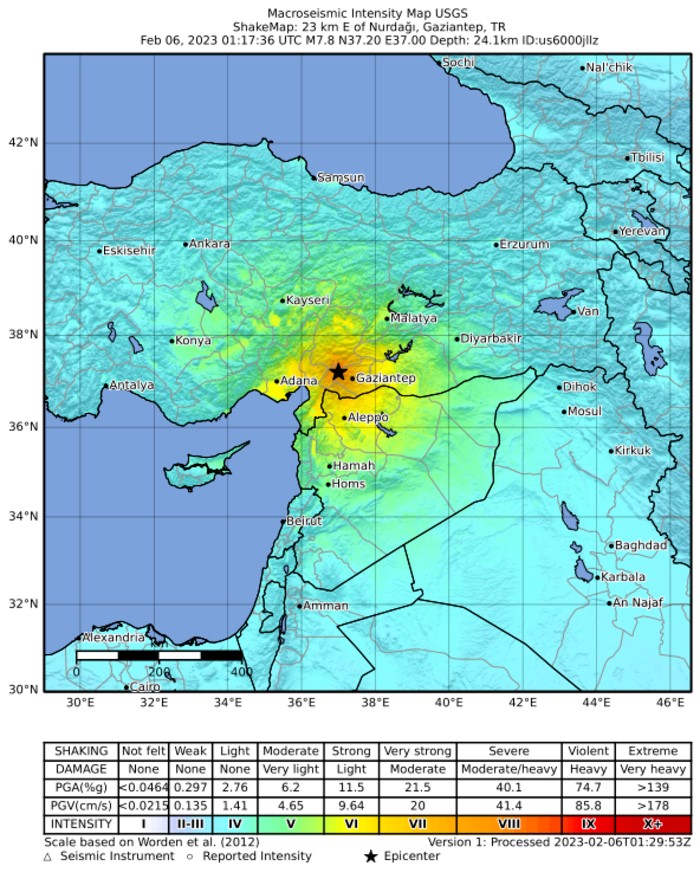
At least 18 million people have been directly affected by the devastating February 6, 2023 earthquakes that killed more than 60,000 women, men, and children and injured more than 114,000 in Turkey and Syria. At least 300,000 buildings have been destroyed or severely damaged, and more than 3 million people have been left homeless and are in urgent need of humanitarian assistance, including large numbers of Syrian refugees. Turkey is currently the largest refugee-hosting country in the world. 3.6 million Syrian refugees have found refuge in the country. The earthquakes have also severely affected northwestern Syria, a region where 4.1 million people already rely on humanitarian aid to survive. Emergency relief operations in Turkey and Syria are ongoing to provide life-saving assistance.
The United Nations launched a flash appeal for $1billion (€ 936 million) in emergency aid to help victims of the catastrophic earthquake in Turkey. The funds will provide humanitarian relief to 5.2 million people. More than 9.1 million people in Turkey have been directly impacted by the disaster. A separate appeal for Syria asked for $397.6 million (€ 373,4 Mio.) to respond to the most pressing humanitarian needs. The flash appeal for the earthquake response in Syria targeted emergency relief to 4.9 million people in most acute need. 8.8 million people in Syria had been affected by the devastating earthquakes.
Donations
- UN Crisis Relief: Türkiye-Syria Earthquake Appeal
https://crisisrelief.un.org/turkiye-syria-earthquake-appeal - World Food Programme (WFP): Earthquakes in Türkiye and Syria
https://donate.wfp.org/1244/donation/single/?campaign=2025 - UNHCR: Türkiye-Syria Earthquake Emergency
https://donate.unhcr.org/int/en/turkiye-syria-earthquake-emergency - International Federation of Red Cross and Red Crescent Societies (IFRC): Syria Earthquake
https://donation.ifrc.org/?campaign=d333c1a4-09a7-ed11-a2da-005056010028 - International Federation of Red Cross and Red Crescent Societies (IFRC): Türkiye Earthquake
https://donation.ifrc.org/?campaign=f3cfd66a-0ba7-ed11-a2da-005056010028 - CARE International: Turkey Syria Earthquakes Fund
https://my.care.org/site/Donation2?36068.donation=form1&df_id=36068 - Concern worldwide: Turkey-Syria Earthquake Emergency Appeal
https://www.concern.net/donate/turkey-syria-earthquake-emergency-appeal - Disasters Emergency Committee (DEC): Turkey-Syria Earthquake Appeal
https://donation.dec.org.uk/turkey-syria-earthquake-appeal
See also
Kenya Crisis (Archive)
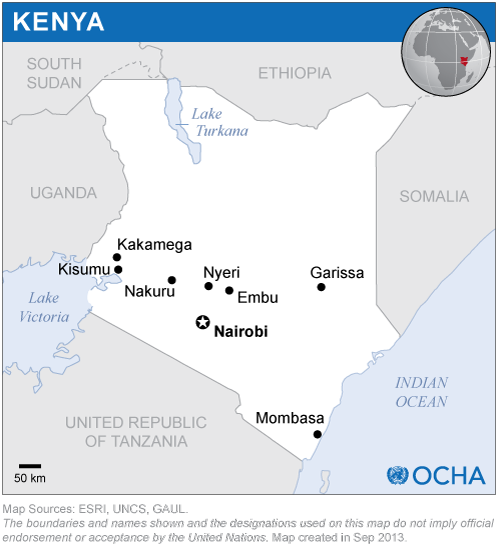
The impact of El Niño-induced heavy rains and flooding during the 2024 March to May rainy season has been catastrophic across Eastern Africa. Torrential rains and flooding – both riverine and flash floods – in Kenya have claimed lives, displaced people, and caused extensive damage. The March-May 2024 rainy season has now ended in most parts of the country.
At least 315 people have lost their lives, 188 have been injured, 38 are missing, and more than 300,000 people have been affected, including 293,000 who have been displaced by the extreme weather. The UN Refugee Agency (UNHCR) reports that nearly 20,000 people in the Dadaab refugee camps – home to more than 380,000 people – have been displaced due to rising water levels.
Kenya has been experiencing enhanced rains since September 2023, with alarming level rainfall as a result of El Nino conditions. The third and fourth weeks of October marked the beginning of the rainy season characterized by heavy storms that caused flash floods and massive flooding, affecting hundred of thousands. Further flooding is expected, which could lead to more displacement, death and disease.
Countries in the Horn of Africa were hit by the longest and most severe drought on record, leaving millions at risk of starvation. Among these countries, Kenya was also facing unprecedented drought due to five consecutive below-average rainy seasons. By the end of 2022, an estimated 4.4 million people were acutely food insecure (crisis level or worse), including 1.2 million in emergency situations. At least 2.5 million livestock had died due to drought. Water sources were drying up in Kenya's pastoral areas after the end of the fifth consecutive failed rainy season.
Kenya was facing the greatest acute food insecurity ever recorded in the country, surpassing the levels of the 2011 and 2017 droughts, and the worsening drought was exacerbating insecurity and resource-related conflicts in many drought-affected regions.
In 2023, improved rainfall, access to water and pasture alleviated the impact of the severe and protracted historic drought. Although the rains have brought some relief, it will be years before the historic drought is overcome.
According to the latest IPC food security analysis, some 1.5 million people faced crisis or worse levels of hunger between October 2023 and January 2024, including some 266,000 under IPC phase 4 (emergency) and 1,26 million under phase 3 (crisis). This is a welcome and significant decline compared to 4.4 million in February 2023.
However, a total of 946,000 children under five still face acute malnutrition; 217,000 of these children face severe malnutrition and may be at risk of dying without immediate treatment.
The improved food security situation can be attributed to favorable rainfall during the 2023 March to May season, and the October to December period, attributed to El-Nino conditions.
The United Nations estimated that 6.4 million people were in need of humanitarian assistance in 2023, including 2.2 million children. In addition, Kenya hosts some 770,000 refugees from neighboring countries, mainly Somalia.
Donations
- World Food Programme (WFP): Kenya emergency
https://www.wfp.org/emergencies/kenya-emergency - Malteser International: Drought relief in Kenya
https://www.malteser-international.org/en/our-work/africa/kenya/drought-relief-in-kenya.html - UNHCR: Horn of Africa drought emergency
https://donate.unhcr.org/int/en/horn-africa-drought-emergency - Save the Children US: Horn of Africa Climate Crisis
https://www.savethechildren.org/us/what-we-do/emergency-response/horn-of-africa-climate-crisis - Oxfam International: Climate and food crisis in East and Central Africa
https://www.oxfam.org/en/what-we-do/emergencies/climate-and-food-crisis-east-and-central-africa
See also
Pakistan Crisis (Archive)

Heavy rains and a combination of riverine, urban and flash flooding led to an unprecedented climate-induced humanitarian disaster in Pakistan that started in June 2022, causing widespread fatalities, killing livestock, and damaging and destroying public and private infrastructure across the country. Rain-induced landslides and floods also damaged agricultural land and forests, impacting local ecosystems. The floods and heavy rains affected some 33 million people, including at least 7.9 million people who have been internally displaced.
Six months after the catastrophic floods in Pakistan, more than 10 million people, including children, in flood-affected areas were still without safe drinking water, according to UNICEF. This left families with no choice but to drink and use water potentially contaminated with disease.
The UN estimates 20.6 million people were in need of humanitarian assistance in 2023, largely driven by a lack of access to clean water and health services, and increased food insecurity and malnutrition rates. The latest IPC food insecurity analysis indicates that around 8.62 million people were food insecure (crisis level or worse) from September to December 2022, of whom 6.02 million are estimated to be in crisis phase and 2.59 million in emergency phase. Furthermore, Pakistan hosted more than 1.4 million registered Afghan refugees who have been forced to flee their homes.
Donations
- UNICEF: Devastating floods in Pakistan
https://www.unicef.org/emergencies/devastating-floods-pakistan-2022 - International Federation of Red Cross and Red Crescent Societies (IFRC): Pakistan monsoon floods
https://www.ifrc.org/emergency/pakistan-monsoon-floods - Concern worldwide: Pakistan Floods Emergency Appeal
https://www.concern.net/donate/pakistan-floods-emergency-appeal - Islamic Relief Worldwide: Pakistan floods appeal
https://islamic-relief.org/appeals/pakistan-floods-appeal/
To find other organizations to which you can donate, visit: Humanitarian Crisis Relief, Refugees and IDPs, Children in Need, Hunger and Food Insecurity, Medical Humanitarian Aid, Vulnerable Groups, Faith-Based Humanitarian Organizations, and Human Rights Organizations.